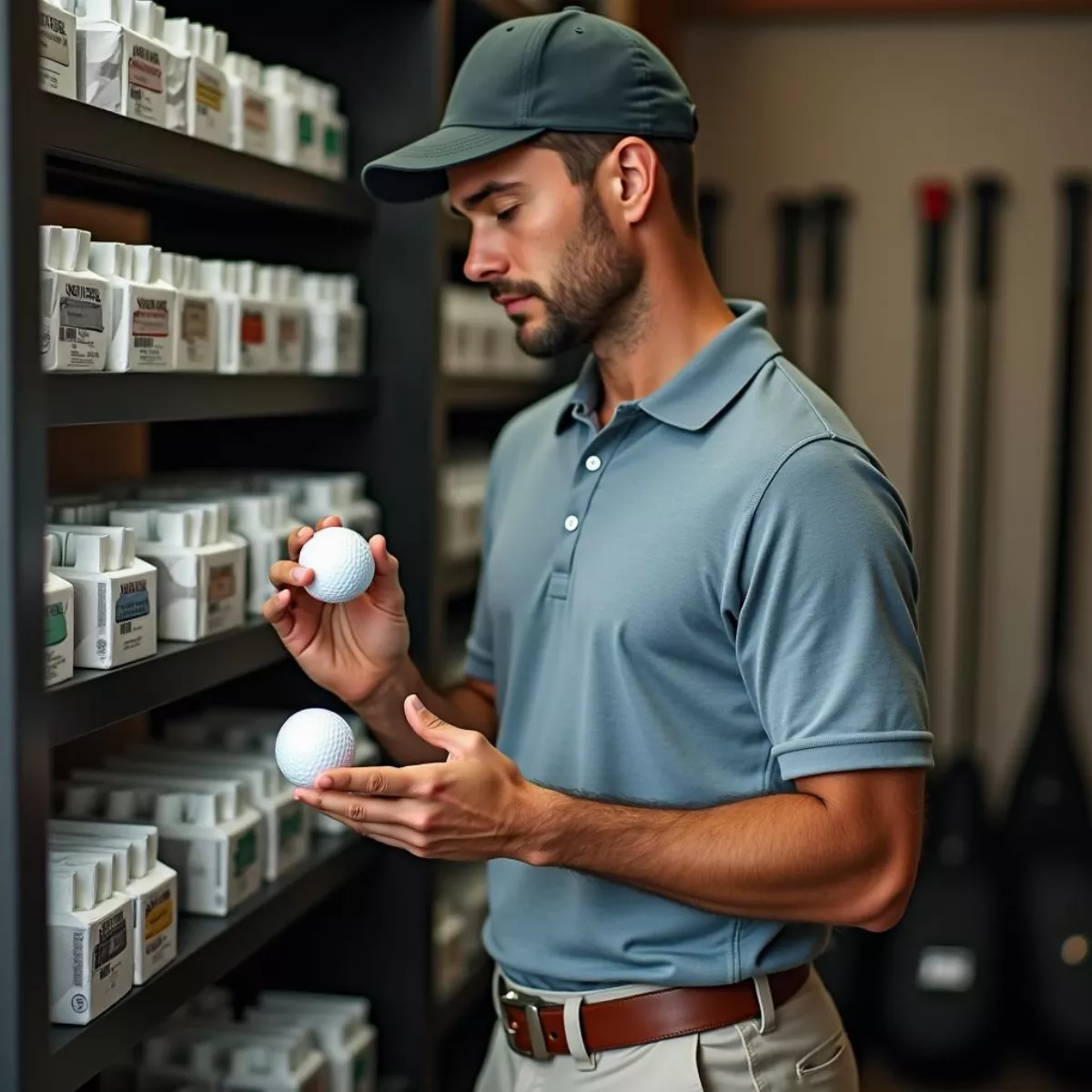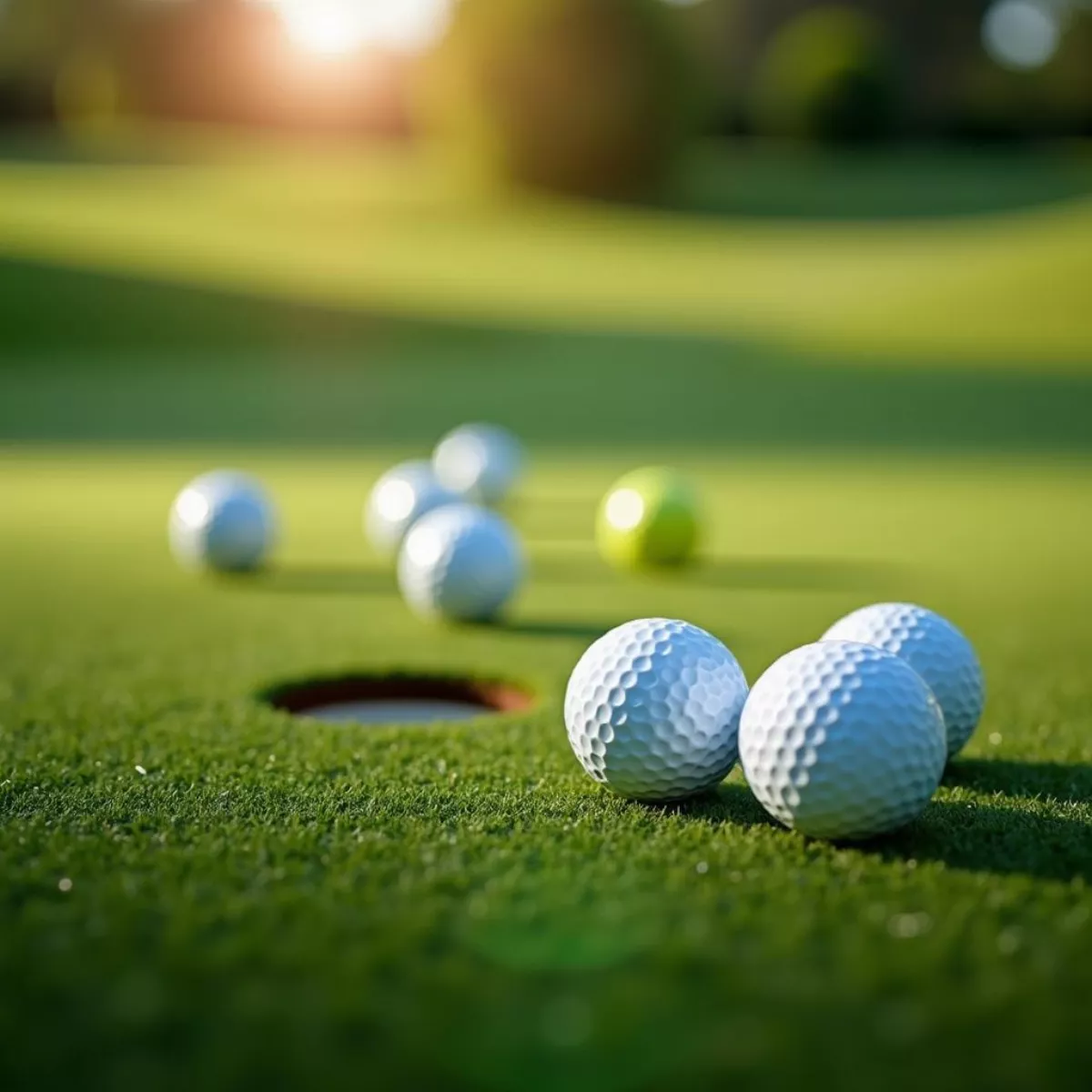Golf is a game of precision, finesse, and strategy. While factors like swing technique and course management play significant roles in your performance, golf equipment remains a crucial element. Among this equipment, the golf ball you choose can have a notable impact on your game. With numerous options available, each designed for different player styles, understanding the various types of golf balls becomes essential.
In this guide, we will explore the different types of golf balls, their construction, and how to choose the best one for your needs. We’ll answer your questions and provide you with all the information necessary to elevate your game.
Understanding Golf Ball Construction
Golf balls typically consist of three main components: the cover, the mantle, and the core. Each of these layers influences how the ball behaves during play.
- Cover: The outer layer, usually made from materials like Surlyn or urethane. This impacts durability, feel, and spin.
- Mantle: The layer between the cover and core, which can affect trajectory and compression.
- Core: The inner layer that dictates distance and compression. A softer core often produces more spin, while a firmer core usually adds distance.
Types of Golf Balls
Golf balls generally fall into three categories: 2-piece, 3-piece, and multi-layer. Let’s dive deeper into each category.
1. Two-Piece Golf Balls
Two-piece golf balls are the most common type, especially among amateur golfers. They typically consist of a solid core encased in a durable cover.
- Characteristics:
- Durability: Highly durable and resistant to cuts.
- Distance: Designed for maximum distance.
- Feel: Less spin and feel around the greens compared to multi-layer balls.
- Best For:
- Beginners
- Recreation players
- Those looking for maximum distance and durability on the course.
 Two-piece golf ball
Two-piece golf ball
2. Three-Piece Golf Balls
Three-piece golf balls offer a more complex construction with an additional layer in between the core and cover. This allows for better control, feel, and spin.
- Characteristics:
- Performance: Greater control over shots and better feel.
- Spin: Enhanced spin for approach shots and chips.
- Versatility: Good for various skill levels.
- Best For:
- Intermediate and advanced players
- Golfers seeking a balance of distance and spin
3. Multi-Layer Golf Balls
Multi-layer golf balls, typically having four or more layers, provide the most advanced performance characteristics. They combine elements of distance, spin, and feel.
- Characteristics:
- Customization: Each layer is engineered for specific performance attributes.
- Spin Control: High spin around the greens while maintaining distance.
- Soft Feel: Designed for enhanced feel and responsiveness.
- Best For:
- Advanced players
- Golfers who prioritize tour-level performance
- Those looking to fine-tune their shots
 Multi-layer golf ball cross-section
Multi-layer golf ball cross-section
Choosing the Right Golf Ball
Now that you understand the different types of golf balls, how do you choose the right one for your game? Here’s a simple checklist to help you make your choice:
- Skill Level:
- Beginners: Opt for 2-piece balls for durability and distance.
- Intermediate: Consider 3-piece balls for added spin and control.
- Advanced: Go for multi-layer balls for maximum performance.
- Swing Speed:
- Lower Swing Speed: Choose softer balls (lower compression) to maximize distance.
- Higher Swing Speed: Look for balls with higher compression to control spin and achieve distance.
- Desired Feel and Spin:
- If you prioritize feel around the greens, go for urethane cover balls.
- For more distance with less spin, stick with Surlyn cover balls.
- Course Conditions:
- Firm greens: Opt for softer balls for better stopping power.
- Soft greens: Choose firmer balls for more distance.
 Golfer choosing golf balls
Golfer choosing golf balls
The Benefits of Using the Right Golf Ball
Using the right golf ball tailored to your game can yield numerous benefits:
- Improved Distance: Correct balls can maximize your distance off the tee.
- Better Spin Control: Enhanced spin can lead to better approach shots and greater stopping power.
- Increased Confidence: Knowing you have the right ball can give you peace of mind throughout your round.
Key Takeaways
- Golf balls come in various types: 2-piece, 3-piece, and multi-layered.
- Beginners should start with 2-piece balls, while intermediates can benefit from 3-piece versions, and advanced players should seek multi-layer balls.
- Consider your skill level, swing speed, desired feel, and course conditions when choosing a ball.
- Correct ball choice can lead to improved distance, spin control, and increased confidence.
Frequently Asked Questions
- What is the best golf ball for beginners?
- A 2-piece golf ball is often recommended for beginners due to its durability and distance.
- Are expensive golf balls worth it?
- If you’re an advanced player or competing regularly, investing in premium balls can significantly enhance performance. However, beginners may not benefit from high-end balls.
- How often should I replace my golf balls?
- Replace your balls as needed when they become damaged or if you feel they’re no longer performing optimally. A general rule is to change them at least every season.
- What does the compression rating mean?
- Compression rating indicates how soft or firm a ball feels. Lower ratings mean softer balls suitable for slower swing speeds, while higher ratings cater to faster swings.
- Can I use the same golf ball for every round?
- It’s essential to choose a golf ball that complements your current game and conditions. You can experiment with different types until you find what works best for you.
- Do all golf balls have the same spin?
- No, different golf balls are designed with varying spin characteristics, influenced by their construction materials and design.
- What is the difference between a Surlyn cover and a urethane cover?
- Surlyn covers tend to be more durable and offer less spin, while urethane covers provide better feel and more spin control for short game shots.
- How do I know which golf ball suits my playing style?
- Assess your swing speed, style of play, and preferences around feel and distance to help determine the right ball for you.
- Do golf balls make a significant difference in performance?
- Yes, the right golf ball can impact distance, control, and overall playability, making it crucial to choose wisely.
 Golf balls on green
Golf balls on green
By following this guide and understanding the differences between golf balls, you’re now equipped to choose the right ball for your game. Enjoy your time on the greens, and remember: the right golf ball can make a world of difference!